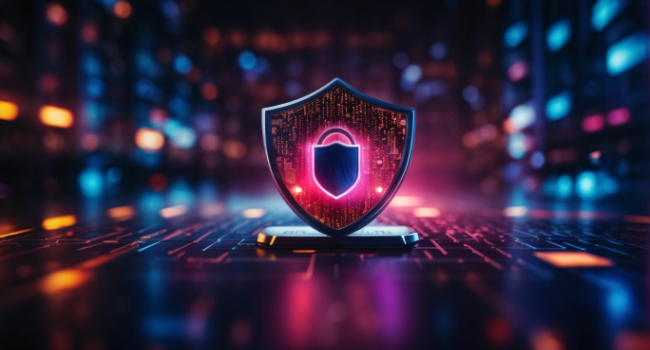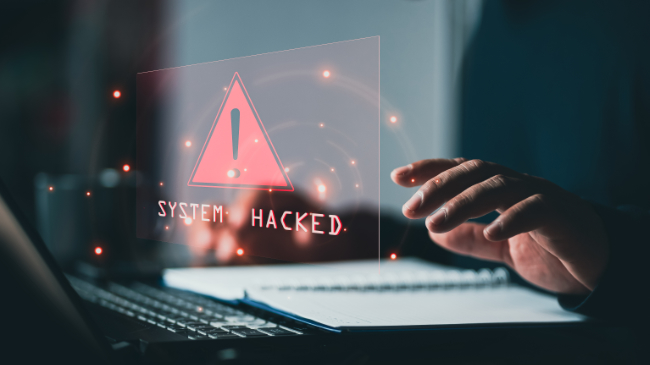Events like Black Friday are digital battlegrounds for retail IT teams with outdated IT systems. Legacy servers groan under unanticipated loads, inventory systems trail woefully behind sales, and point-of-sale (POS) stations lock up at critical moments. IT teams rush through war rooms, battling cascading failures across brittle infrastructure never intended to handle such extreme loads.
- By Reno Dokken
- Jun 26, 2025

An overwhelming 98% of chief information security officers (CISOs) expect a surge in cyber attacks over the next three years as organizations face an increasingly complex and artificial intelligence (AI)-driven digital threat landscape. This is according to new research conducted among 300 CISOs, chief information officers (CIOs), and senior IT professionals by CSC1, the leading provider of enterprise-class domain and domain name system (DNS) security.

The Cloud Security Alliance (CSA), the world’s leading organization dedicated to defining standards, certifications, and best practices to help ensure a secure cloud computing environment, today introduced an innovative addition to its suite of Security, Trust, Assurance and Risk (STAR) Registry assessments with the launch of Valid-AI-ted, an AI-powered, automated validation system. The new tool provides an automated quality check of assurance information of STAR Level 1 self-assessments using state-of-the-art LLM technology.

Omega Systems, a provider of managed IT and security services, today released new research that reveals the growing impact of cybersecurity challenges on leading healthcare organizations and patient safety. According to the 2025 Healthcare IT Landscape Report, 19% of healthcare leaders say a cyberattack has already disrupted patient care, and more than half (52%) believe a fatal cyber-related incident is inevitable within the next five years.

Arctic Wolf recently published findings from its State of Cybersecurity: 2025 Trends Report, offering insights from a global survey of more than 1,200 senior IT and cybersecurity decision-makers across 15 countries. Conducted by Sapio Research, the report captures the realities, risks, and readiness strategies shaping the modern security landscape.

AI tools are becoming essential to modern work, but their fast, unmonitored adoption is creating a new kind of security risk. Recent surveys reveal a clear trend – employees are rapidly adopting consumer-facing AI tools without employer approval, IT oversight, or any clear security policies. According to Cybernews Business Digital Index, nearly 90% of analyzed AI tools have been exposed to data breaches, putting businesses at severe risk.

Action1, a provider of autonomous endpoint management (AEM) solutions, today released its 2025 Software Vulnerability Ratings Report, revealing a 61% year-over-year surge in discovered software vulnerabilities and a 96% spike in exploited vulnerabilities throughout 2024, amid an increasingly aggressive threat landscape.

Organizations are increasingly turning their attention to human-focused security approaches, as two out of three (68%) cybersecurity incidents involve people. Threat actors are shifting from targeting networks and systems to hacking humans via social engineering methods, living off human errors as their most prevalent attack vector. Whether manipulated or not, human cyber behavior is leveraged to gain backdoor access into systems. This mainly results from a lack of employee training and awareness about evolving attack techniques employed by malign actors.
- By Erich Kron
- May 30, 2025

CyCognito recently released new research highlighting critical security vulnerabilities across cloud-hosted assets, revealing that one in three easily exploitable vulnerabilities or misconfigurations are found on cloud assets. As organizations increasingly shift to multi-cloud strategies, the findings underscore significant security gaps that could provide attackers with potential footholds into networks.
With the ongoing expansion of digital attack surfaces coupled with cost constraints, outdated infrastructure, and a shortage of cybersecurity talent, many businesses are sorely exposed. For most companies, breaches are a matter of when, not if. AI-driven threats further amplify the risk.
- By Ravi Srivatsav
- May 21, 2025

If you work in physical security, you have probably seen it: a camera, access control system, or intrusion detection device installed years ago, humming along without a single update. It is a common scenario that security professionals have come to accept as "normal." But here is the reality: this mindset is actively putting organizations at risk.
- By Will Knehr
- May 19, 2025

We all know that physical security devices capture a massive amount of information about the environment in which they’re deployed. When categorized and searched efficiently, that data transforms into actionable intelligence to better protect the organization. That is where metadata comes into play.
- By Wayne Dorris
- May 14, 2025

KnowBe4, the cybersecurity platform that comprehensively addresses human risk management, today launched its “Phishing by Industry Benchmarking Report 2025” which measures an organization’s Phish-prone Percentage (PPP) — the percentage of employees likely to fall for social engineering or phishing attacks, indicating the organization’s overall susceptibility to phishing threats. This year’s report found a global average baseline PPP of 33.1%, meaning a third of employees interact with phishing simulations before taking part in best-practice security awareness training (SAT).COVER 2025-PIB-NA-Report_EN-US
By 2027, many organizations will be facing a world in a state of constant upheaval. We're anticipating a lot of disruption from geopolitical conflicts, natural disasters, and from ever-rapid technological shifts that we continue to see and have grown accustomed to.
- By Steve Durbin
- May 05, 2025

Verizon Business recently released its 2025 Data Breach Investigations Report (DBIR), which reveals a significant increase in cyberattacks. The report found that third-party involvement in breaches has doubled to 30%, and exploitation of vulnerabilities has surged by 34%, creating a concerning threat landscape for businesses globally.

Netwrix, a cybersecurity provider focused on data and identity threats, today announced the release of its annual global 2025 Cybersecurity Trends Report based on a global survey of 2,150 IT and security professionals from 121 countries. It reveals that 60% of organizations are already using artificial intelligence (AI) in their IT infrastructure and 30% are considering implementing AI.

IBM recently released the 2025 X-Force Threat Intelligence Index highlighting that cybercriminals continued to pivot to stealthier tactics, with lower-profile credential theft spiking, while ransomware attacks on enterprises declined. IBM X-Force observed an 84% increase in emails delivering infostealers in 2024 compared to the prior year, a method threat actors relied heavily on to scale identity attacks.

KnowBe4, the world-renowned cybersecurity platform that comprehensively addresses human risk management, today launched its Phishing Threat Trend Report, detailing key trends, new data, and threat intelligence insights surrounding phishing threats targeting organizations at the start of 2025.
DataKrypto, provider of advanced fully homomorphic encryption (FHE) solutions for continuous data protection, announced today that Digimat has selected its FHEnom for Images™ to enhance data security for satellite imagery. A global leader in digital transformation and smart technology, Digimat’s adoption of this technology marks an industry-first for satellite missions.

Small and medium-sized businesses (SMBs) play a crucial role in the U.S. economy, making up 99.9% of all businesses and contributing to half of the nation's GDP. However, these vital economic growth drivers face an escalating threat—cyberattacks that could put them out of business.